BioHack Adcademy(BHA) 2022
A Personal Documentation of BHA 2022
Week4 Growing Materials
Contents
1. Biosafety
2. Biology Basic
3. Making Mediums
4. Combucha
(3/28 Note. I have finally learned how to make index inside a page.)
Biosafety
Be careful to “biological agents”
・The “biological agents” do not include only what causes harm. Rather, they are any micro-organism, including genetically modified, cell culture or endoparasite.
Risks inside & outside the Lab
・We must avoid risks to yourself, populations, environments…and these are connected each other.
Bio-occupational Health strategy
・Change material: safe strain [biological containment]
・Technical measures(containment)
・Organization(Training, SOPs, access control)
・Hygiene(Hands wash)
・PPE(Coat/gown, gloves, glasses, respirator, …)
・Vaccination(necessary & safficient)
・Post exposition prophylaxis(PEP: very much dependent on organism)
Biosafety Level
The are four categories of biosafety level.
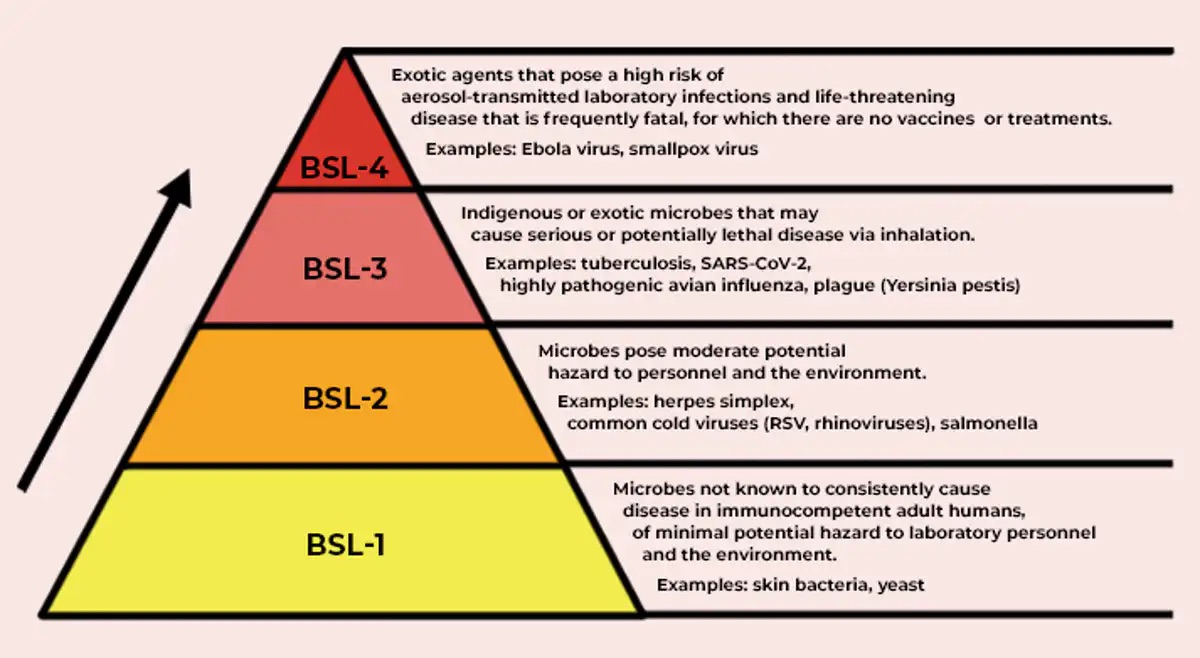
Image from here
Biology Basic
The diversity of life
Aristotle, Carl Linnaeus, Ernst Haeckel… They made distinction of life in different way. It shows how difficult it is to categorize organisms.
Complex cells, single cells
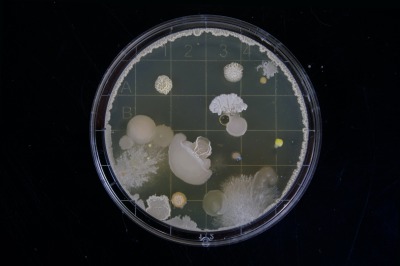
・Found in soils and water
・Eats carbohydrates
Characteristics and uses
・Violacein
・Antioxidant, anti-fungal and anti-bacterial effects
・Dye
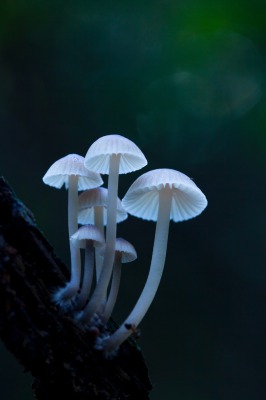
Image from here
Mushroom, Mycelium(菌糸体), Eats cellulose(wood)
Behave like animal (have memory)
Characteristics and uses
・Network: Wood wide web
interact with other organisms (flowers, trees, plants, etc)
・Antibacterial Properties: Penicillin
・Bioremediation
・Material

Image from here
・Unclear how to categorize them
・Single celled amoebas
・Complex “intelligent” behavior
They have memory.
・Movement
You can see the move.
Similarity with robot.
Survival of the Fittest
Survival of the Fittest(「適者生存」in Japanese)
Limits to Growth or Petridish Planet
・Competition for Resources: Food (nutrients), Energy, Space, Water.
・Evading Competition: Temperature, Chemicals, Radiation, Gravity
SCOBY
“Symbiotic culture of bacteria and yeast”
Combination/collaboration of organisms.
Yeast to produce alcohol from sugar
Bacteria to produce acid from alcohol
Bacteria produce cellulose
Symbiosis
“Sym” = “Together”, “Bio” = “Living”
Cell is one of the example of symbiosis.
Central Paradigm: DNA-RNA-Protein-Trait
Any organisms have DNA(DNA=information sources)
DNA(Gene) -> RNA(Message) -> Protein
How to observe and write down
Empirical Cycle …Basis of observation.
What you have done.
If you go through the steps all the time, it is much easier to gather information whole experiments.
A. What do you want to research?
A. What do you think is the answer to your Research Questions?
B. Why do you think this?
A. What do you think is this will show in your experiment?
B. Describe your expected results.
Write it down!
・Your plan and how to execute it.
・All the steps that you performed.
A. What are my observations?
B. Be as specific as possible
c. Be objective, co conclusions or judgement
(Just make sure that what are the observation.)
a. How do your observation compare to your predictions?
B. Do your observations back up your hypothesis?
C. What is the answer of your research question?
D. (What new research question comes up?)
Making Mediums
Standard Medium
3/22(Tue) & 3/24(Thu)
Contents
・Water 500ml
・Sugar 15g
・Agar 6g
・Vitamin (optional)
How to make
(1)Mix every contents
Make a mixture of agar and nutrients to glow organisms.
(1-1)Put a stirrer bar into a little bigger flask.
(1-2)Pour 500ml water into the flask.
(1-3)Mesure exactly sugar and agar powder. When measuring, you should put a weighing paper on a scale.Instead of weighing paper, it is also OK to measure by using cups of beakers on the scale.
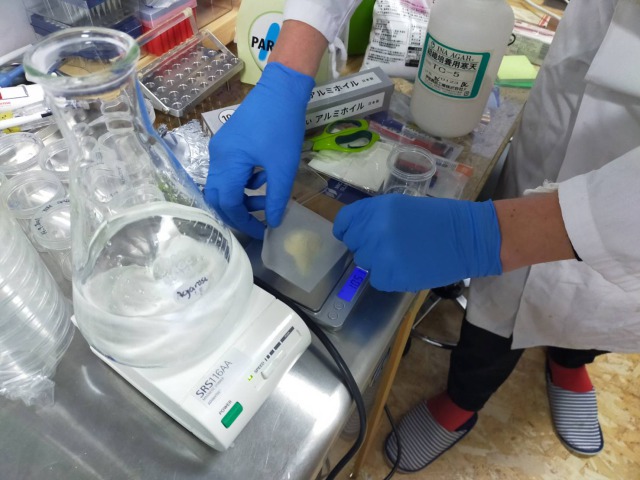
(1-4)Mix (1-3) into the water.(It is easier to put the powders if you fold the weighing paper diagnally.)
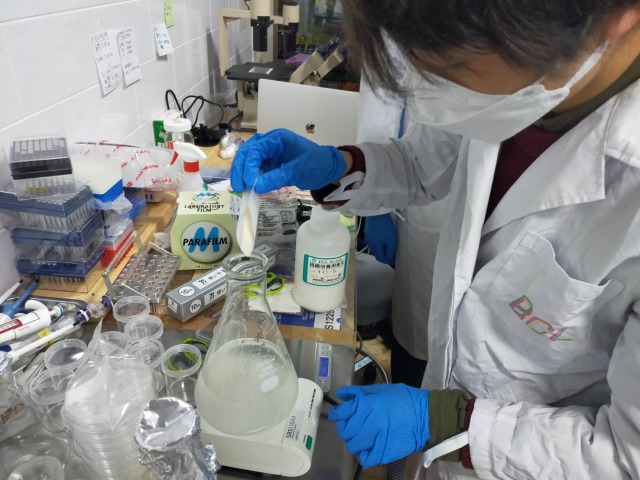
(1-5)Turn on the magnetic stirrer to mix up the water and the others.
(2)Sterilization
Autocrave is used for sterilization. Autocrave is like a steamcooker that sterilizes by high temprature steam.
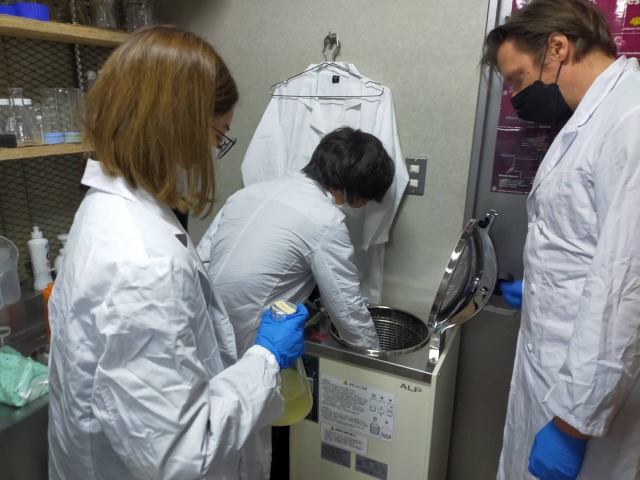
How to use
(2-1)Before use, it is necessary to check there is water enough inside an autocrave. To check, kick lightly the side of the autocrave and watch whether the water waves at the bottom.
(2-3)Cover the mouth of the bottle with aluminium foil. (I forget why…)
(2-2)Seal autocrave tape on somewhere of the bottle. It helps to tell whether it has already went through autocrave. After autocraving, stripes appear on the tape.
Point: Loose a lid a little to avoid explosion.
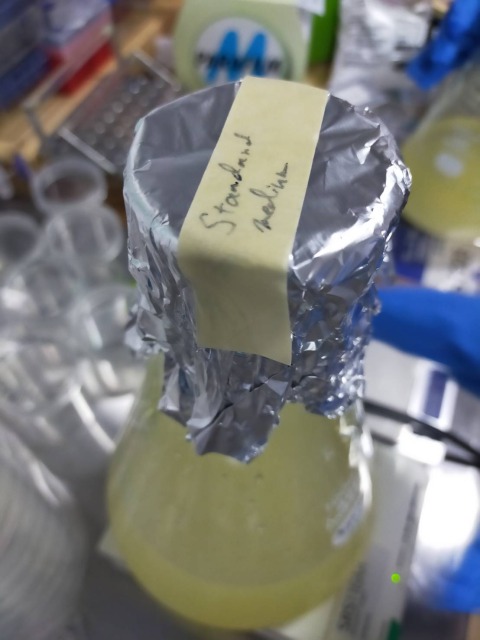
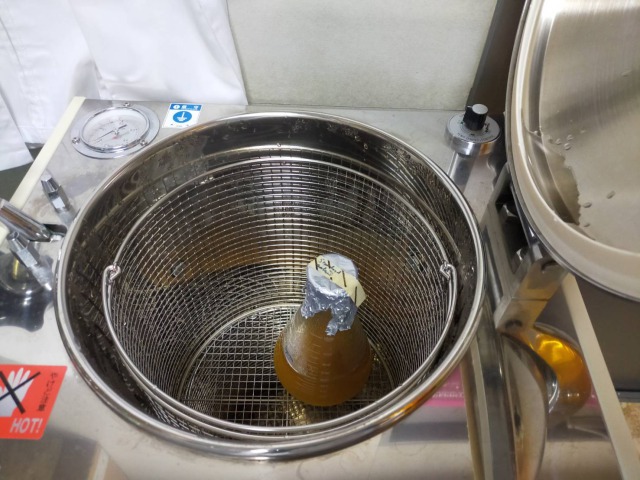
(2-4)Turn on the switch. Although autocraving takes around 15 minutes, we need to wait longer till the pressure in the autocrave fully fall.
(3)Pour Liquid Solution into Petridish
(3-1)Place the bottle out of the autoclave in a clean bench. Be careful not to burn!
(3-2) Pour the medium into petri dishes from the bottle, about (1〜3mm).
Point: Minimize the time to open the lid of a petri dish as possible.
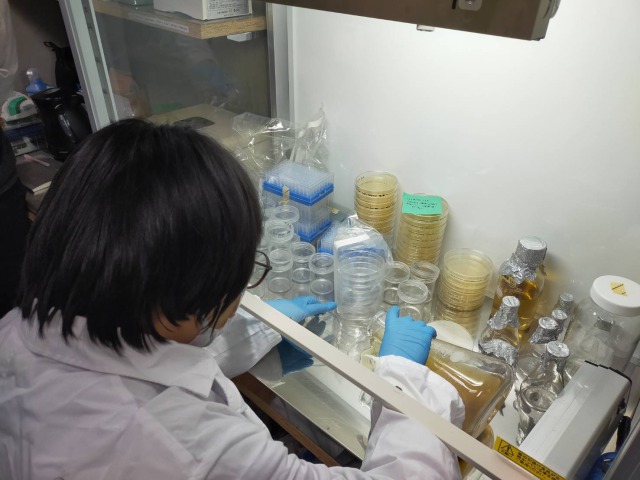
(Trivia: YCAM bio-research team uses a kettle instead of glass bottles 👀‼ According to them, kettle is so convenient to pour mediums.)
(3-4)Point: Sterilize EVERYTHING before put them into clean bench by spraying or wiping with alcohol, since bacterias could be on it.
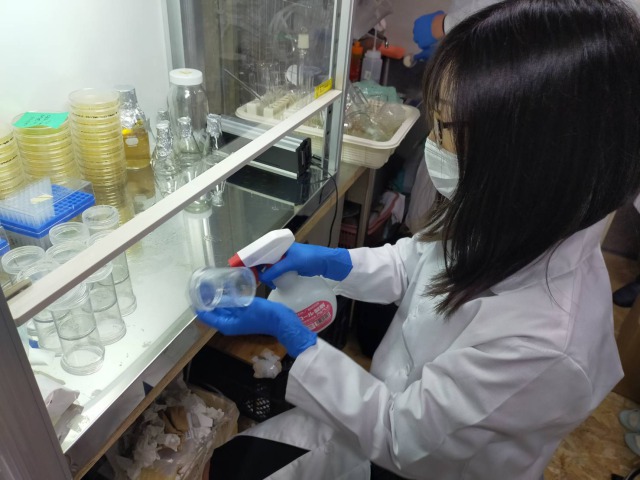

Sampling
Rub wherever you like with a cotton swab or a bamboo skewer, then spread it on the surface of medium. The spreading should be done gently.
We took samples from many place: nose, arm skins, plants, surface of masks, the outside air, etc. Next week We will observe whether bacteria has grow on these mediums.
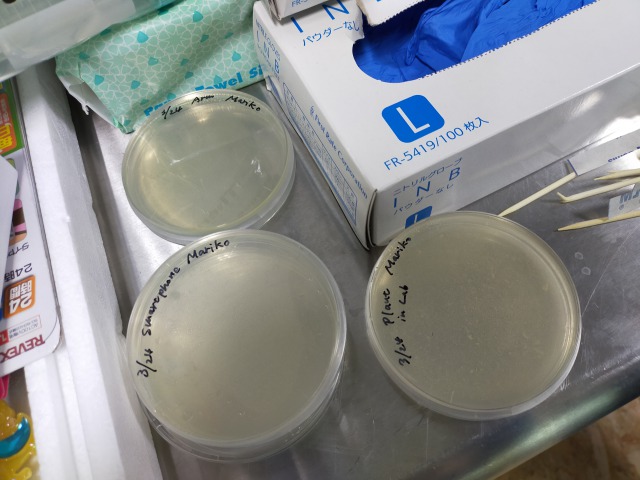
Homemade Medium
3/27(Sun)
I made a DIY medium at my kitchen.
Contents
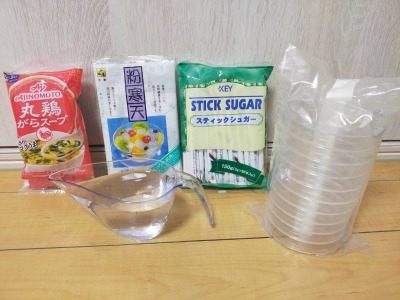
・Water 250ml
・Agar 4g
・Sugar 6g
・Chicken Soup 2g
I bought these items from supermarket and ドンキ・ホーテ (a discount chain store) near my house. Plus I bought a small alcohol spray in a 100-yen shop for sterilization.
If you want to make more special mediums, you should add other stuffs (yeast extract(酵母エキス), for example).
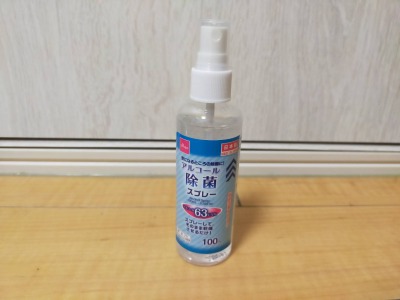
Protocol
(1) Clean up kitchen at first(unless you keep it clean always). I tried to sterilize the kitchen counter by spraying alcohol. I also sprayed alcohol to a measuring cup, a pot, and a spoon.
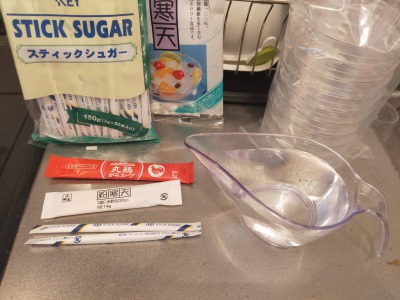
(2) Measure what is need. As I didn’t have a scale, I used sugar and agar which packed in small portions, because it make it easily to measure how many grams.
(3) Mix water, agar, sugar, and chicken soup in a pot.
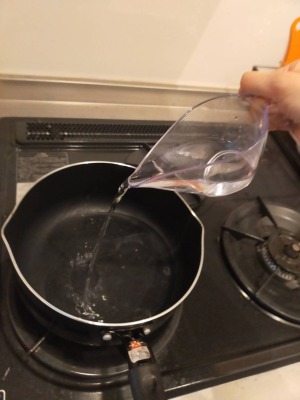
(4) After the water comes to a boil, turn the heat to low and cook for 2 minutes with dissolving with spoon.
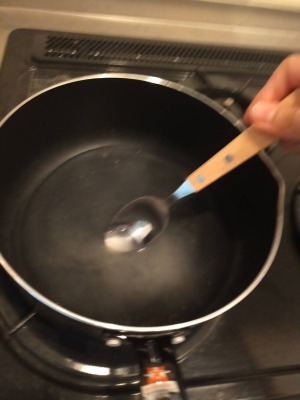
(5) Pour it into plates.
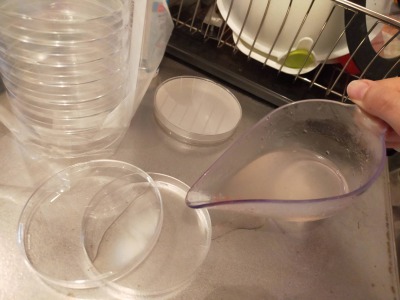
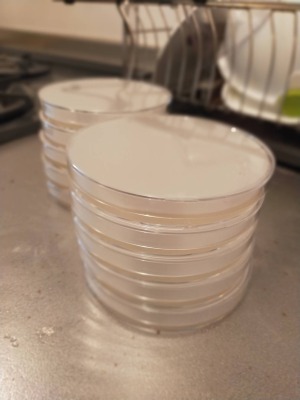
(6) Seal the plate’s lid. Parafilm is generally used for it, but in this time I used a clingfilm(サランラップ).
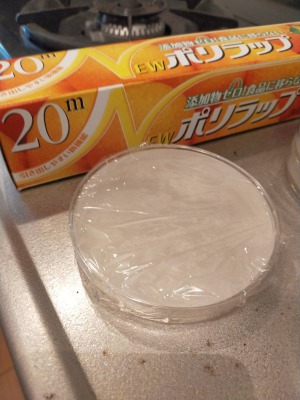
(7) Cool them down until the agar get hard. It will take about half a day till agar become hard.
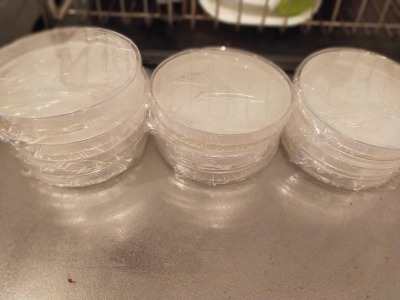
Comments and Questions
・Can I put sugar and chicken broth together? Or is it enough to put either? -> OK!(3/31)
・It was unexpectedly difficult to make a sterilized space in my kitchen. I tried to keep there clean as possible as I could by spraying alcohol, I did not know to what extent I should clean up.
・Putting the petri dishes in the fridge might help it harden faster. But I did not it because I was not sure the inside of refrigerator is clean.
・If I have time, I would like to research where I can get the items for the other kind of mediums.
References
・Lists of Medium (Waag Society)
・Organisms (Waag Society)
Sampling outside
4/1(Fri), I took wild samples in my neighborhood.
The subject I took were bark, cherry blossom, soils, a manhole.
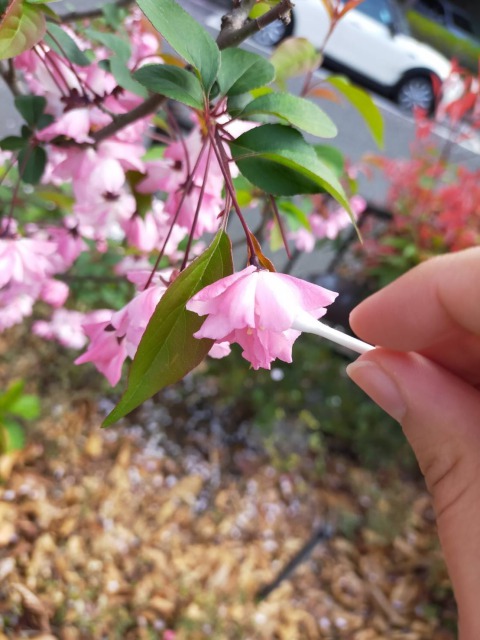
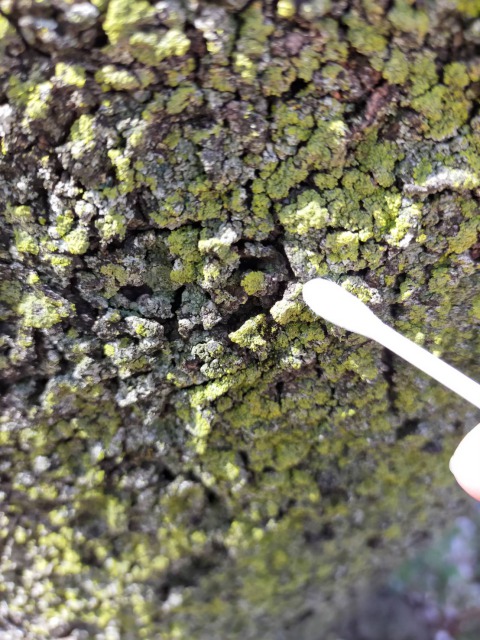
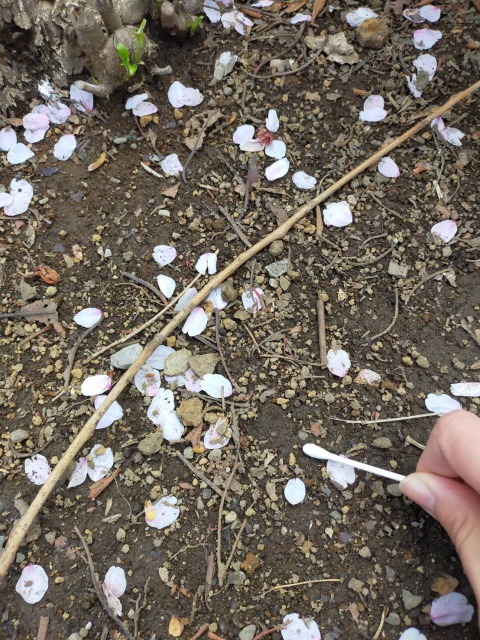
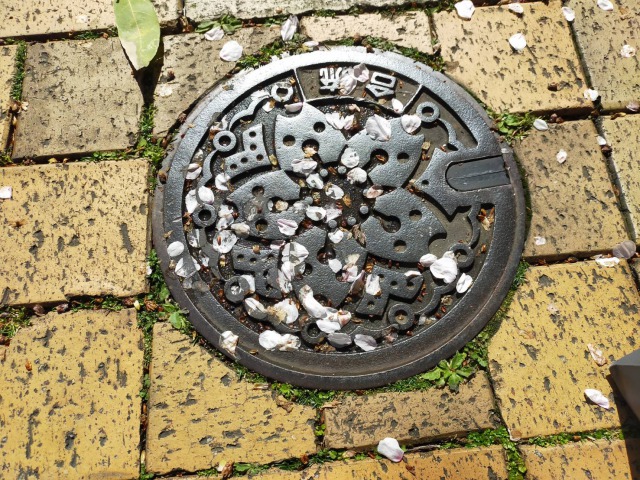
4/4 (Mon) Something appear on the mediums!
Three days later, I found that there was something growing along the swab marks in two of the samples! These are the sample taken from soils and manhole. In the soil medium, there were something like bacteria which color was yellow and partly slightly purple. The color of manhole sample was light lemon. I wasn’t expecting much honestly, so I was happy to see the change on the medium. The other cherry petal and bark samples showed no change, so it seems that it is better to take samples from a moist place than a dry place.
Soil
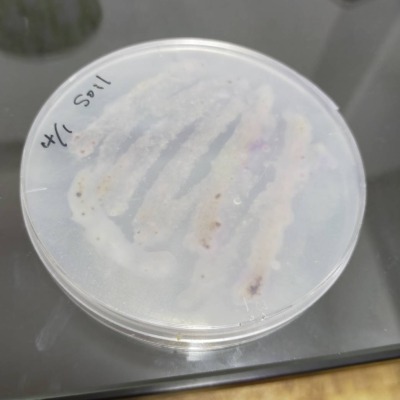
Manhole
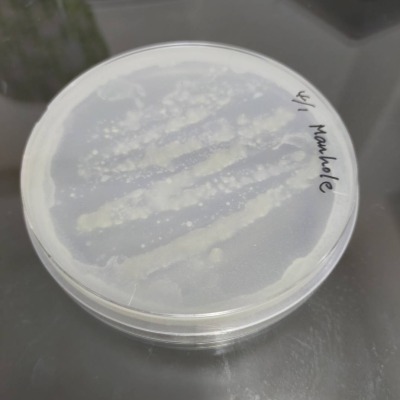
4/8(Fri) Grow more
After 1 week from the sampling day, I found molds on the other samples which I found almost nothing from them at 4/4. Especially one of the bark samples, it was grew a lot! These patterns and kinds were different each other. It was really pleasure to watch.
Soil
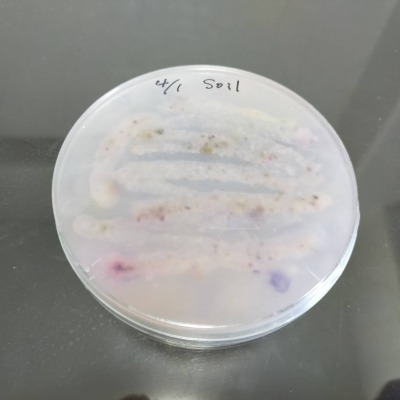
Manhole
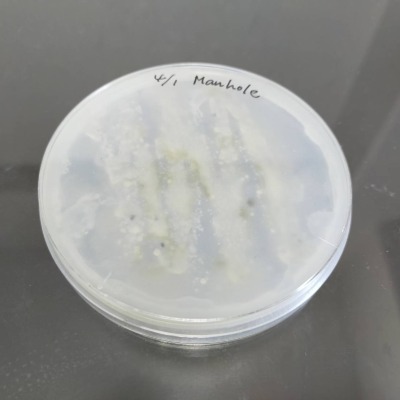
Barks
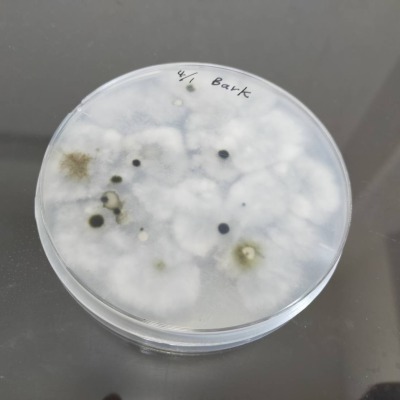
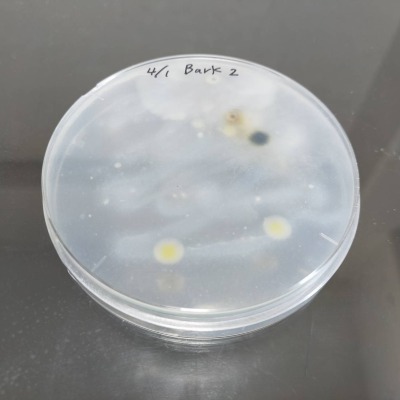
Sakura
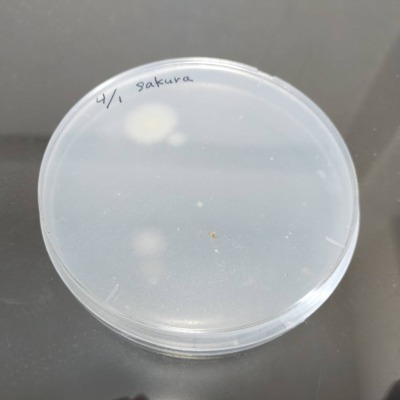
Questions
・What kind of molds in these samples? I’m particularly curious about what is the purple one (took from soil).
・How to know what is the kinds which grow?
Combucha
3/24(Thu)
What is Combucha?
Combucha is known as healthy food. It is totally different from what we Japanese know as Kombucha (昆布茶).The Forbes’ article explains Combucha(kombucha) as below.
“[K]ombucha is a fermented and sweetened tea often made with black or green tea. It is largely classified as a functional beverage, meaning that it is a non-alcoholic drink that contains vitamins, amino acids or other nutrients associated with health benefits. The process of preparing kombucha can vary but generally involves a double fermentation process wherein a SCOBY (a pancake-shaped symbiotic culture of bacteria and yeast) is placed in a sweetened tea mixture and left to ferment at room temperature for 1-3 weeks, and then bottled for 1-2 weeks to contain released CO2 and encourage carbonation.”
The interesting point is that Combucha is made of bacteria and yeast.
Although instruction manual with the Combucha kit says that the taste is fruity, and the taste changes as fermentation proceeds, I can’t imagine what it tastes like.
Wikipedia article is also detailed.
As written above, it is a general to drink it with mixing it with blacktea, we tried to make several mixture of tea and Kombucha(昆布茶) as our experiments. We made 10 bottles of Combucha in different ratio of tea and Kombucha.
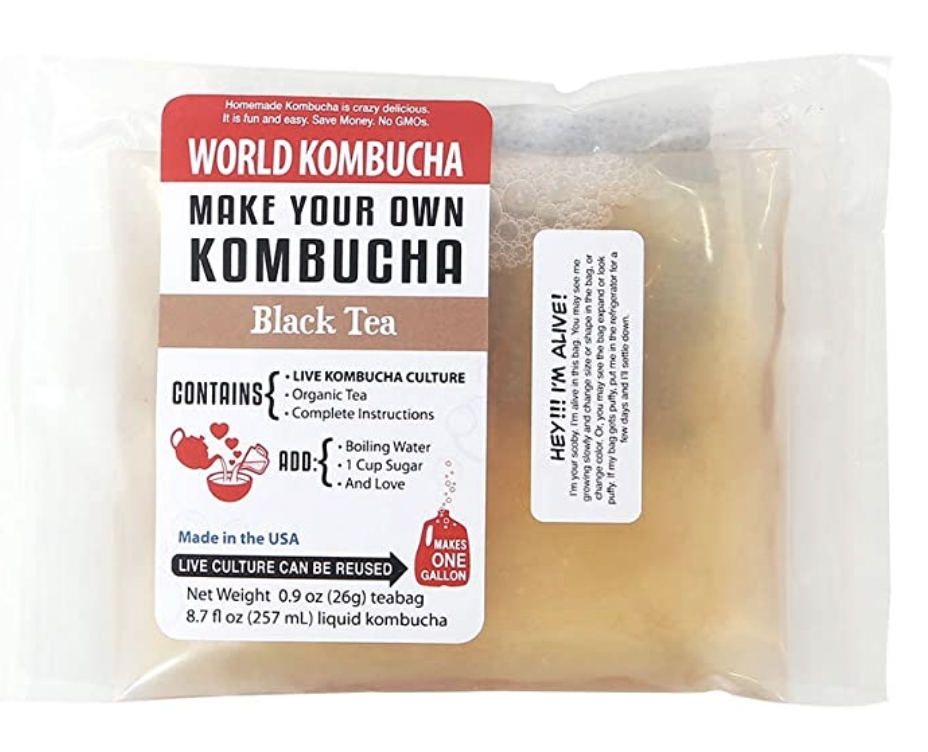
・You can buy it from Amazon
・Price: ¥3,456.
・With a Japanese instruction manual
・You can make Combucha from 500ml〜2gallon(3.8L) by 1 package.
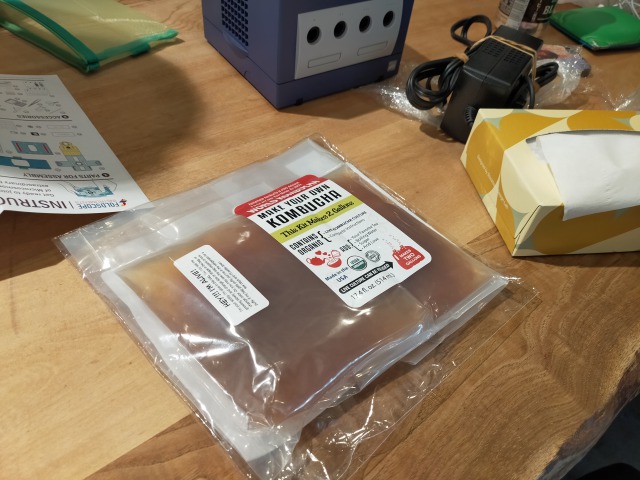
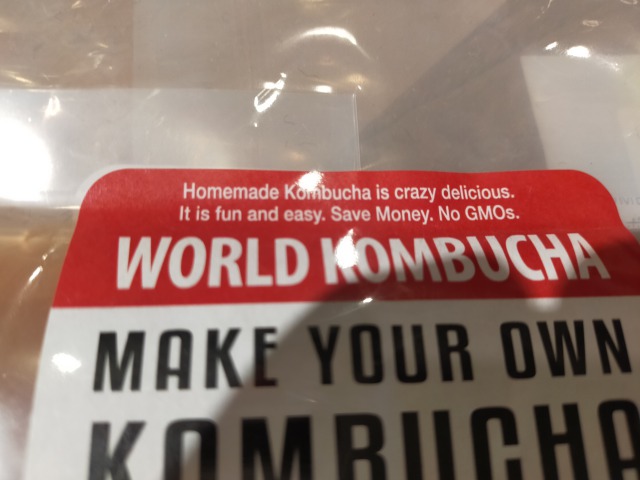
SCOBY/Combucha is speaking!😲
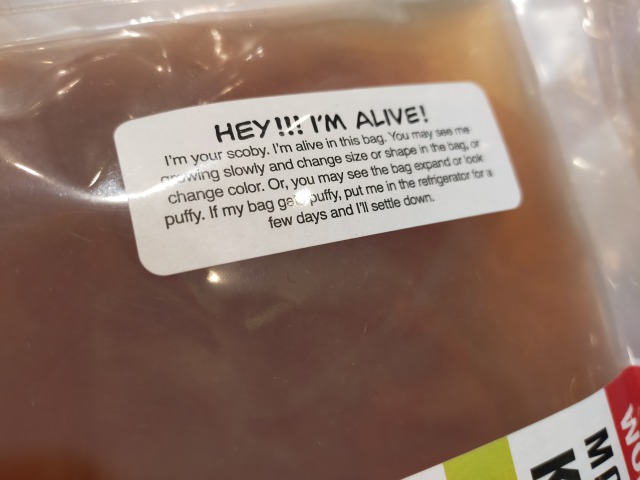
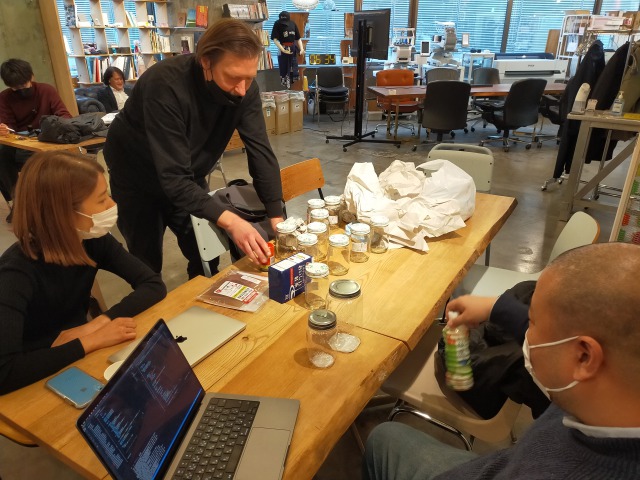
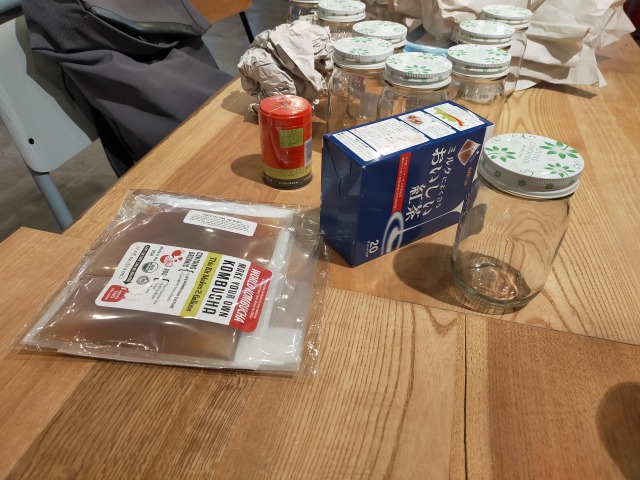
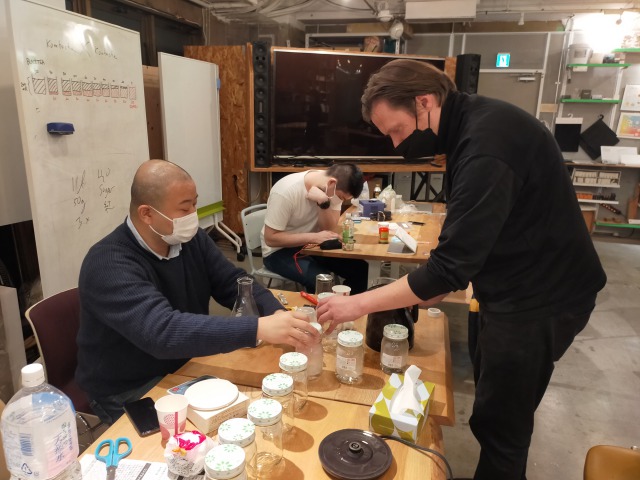
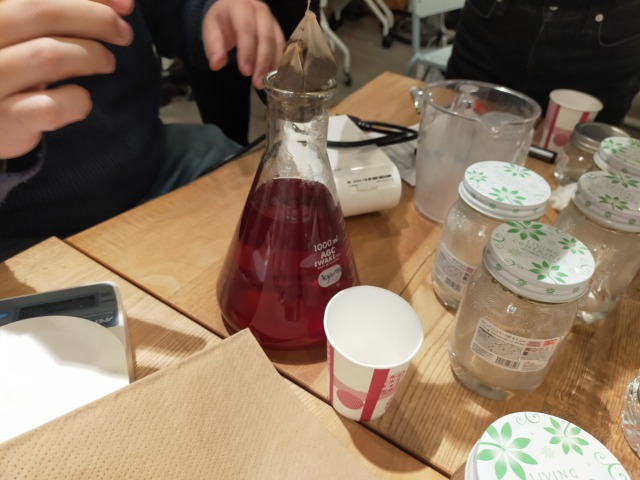
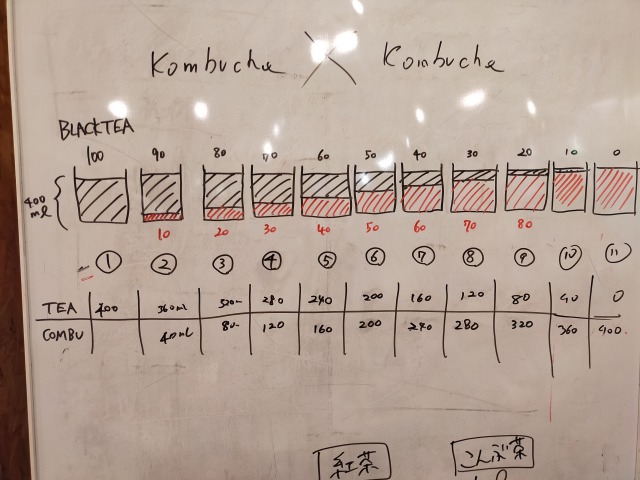
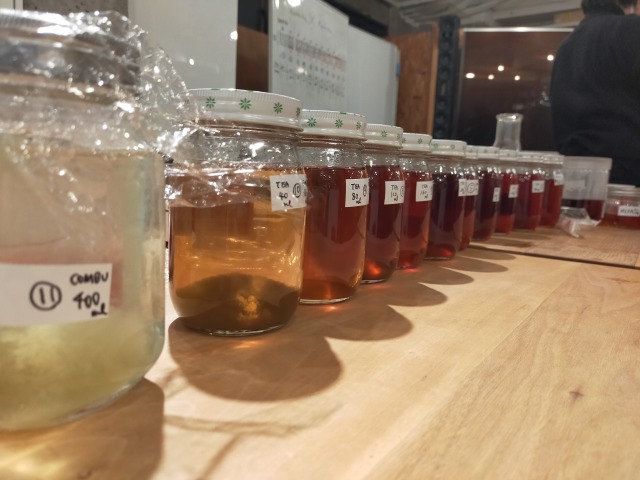
We put Combucha which was cut into small pieces into the bottles.
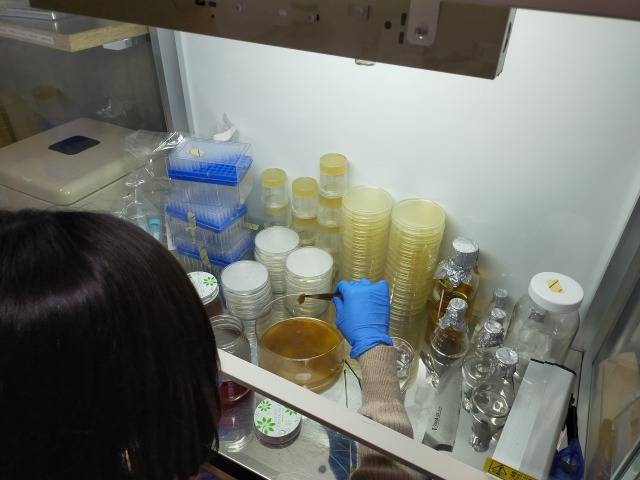
Done!
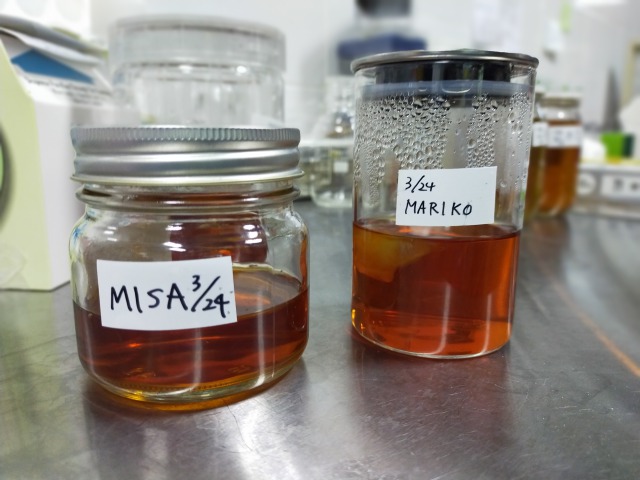
Each of us took home Combucha filled in a container. I put it in a refrigerator.
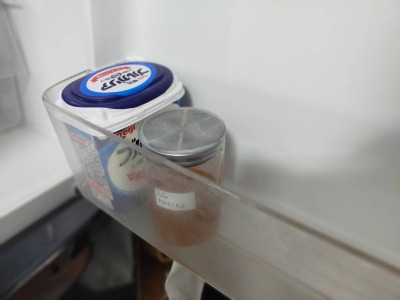
Waiting for growing…
3/29(Tue)
It appeard that I made a mistake! Combucha need not to put into refrigerator, rather it is better to be warmer place for the fermentation.
4/5(Tue)
I have checked how Combucha is going. But I couldn’t feel any change inside it, and the smell was just like black tea.
4/10(Sun)
I have forgot to check my Combucha for a while. I looked it today, and found that the SCOBY inside the bin got bigger. Though it is hard to explain what it was like, something thin, hazy, and translucent like “obi” (Kimono sash belt) were floating in the tea.
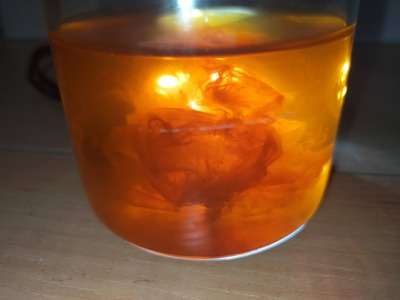
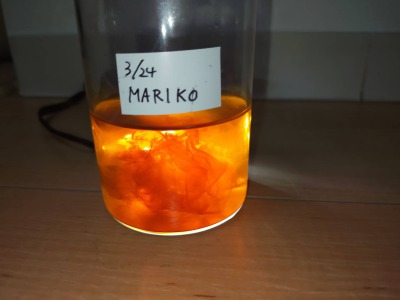
The smell also changed from sour like vinegar to like apricot. It seems smell better compared to that of first day.